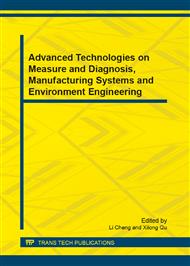p.3
p.8
p.13
p.18
p.22
p.26
p.31
p.36
Activated Carbon in Environment Pollution Abatement Based on Microwave Catalysis Technology
Abstract:
The application of microwave catalysis technology in environment pollution abatement has developed fast in recent years. This paper will primarily introduce the fundamental of microwave catalysis reaction, microwave induced reduction of SO2 and NOx and acid gas pollutants abatement, microwave induced oxidation and organic pollutants removal, microwave induced catalytic reduction and photosynthesis simulation and other technological methods closely related with environment pollution abatement.
Info:
Periodical:
Pages:
13-17
Citation:
Online since:
June 2013
Authors:
Price:
Сopyright:
© 2013 Trans Tech Publications Ltd. All Rights Reserved
Share:
Citation:


